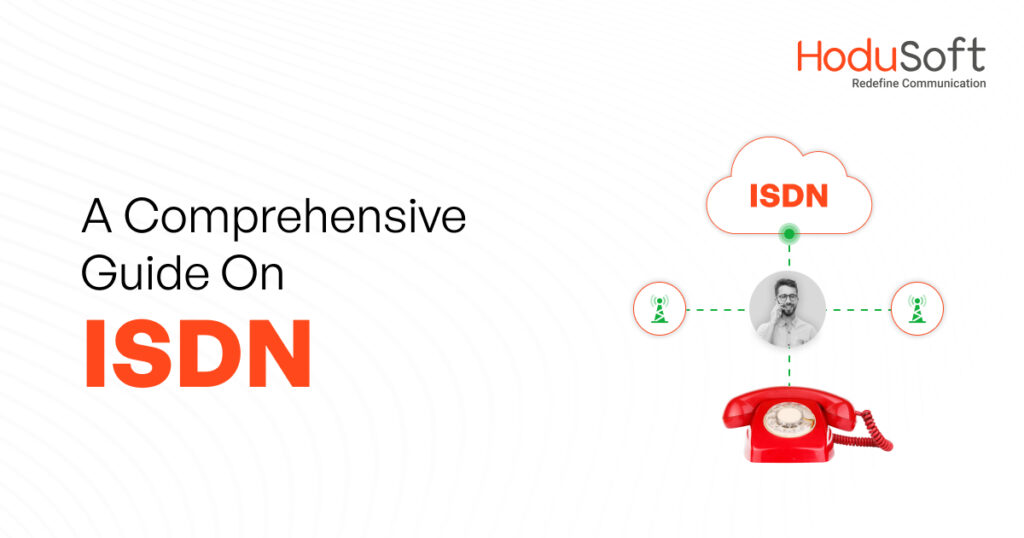11 Ways to Reducing Communication Costs with Internet Telephony Solutions
In today’s competitive landscape, cost efficiency has become a key driver of profitability and sustainability. Managing the cost per call is a paramount challenge for contemporary businesses across various industries.
As per industry standards, an acceptable cost per call could range anywhere from $2.70 to $5.60. However, the cost per call varies from one industry to the other. In some industries, the number can be much higher, and in some, it can be lower. In some sectors, the cost per call can account for almost 50 percent of the total cost of fulfilling an order!
That’s why contemporary businesses must be proactive in exploring strategies and solutions to optimize their communication expenditures. In this blog post, we will discuss eleven practical ways through which Internet Telephony Solutions can help organizations reduce communication costs. Read on and thank us later.
Importance of Cost-Efficiency in Business Communication
Businesses can save a lot of money by optimizing their communication. Once they achieve cost-efficiency in communication, they can achieve a lot of things such as:
Competitive advantage:
Just imagine the competitive advantage a business can gain by reducing its communication costs. In today’s global marketplace, businesses are in constant competition. Those who can communicate with clients, customers, and partners more cost-effectively can offer competitive pricing or invest in innovation, giving them an edge over competitors.
Resource allocation:
Efficient communication spending allows businesses to allocate resources to other critical areas such as research and development, marketing, and customer service. This ensures that available funds are used strategically to drive growth.
Scalability:
Cost-effective communication solutions can scale with a business’s needs. Whether a company is growing rapidly or needs to downsize, having flexible communication systems in place ensures that costs remain aligned with operational requirements.
Cost savings:
Effective cost management in communication translates to reduced expenses. This includes lowering costs associated with phone bills, internet services, hardware maintenance, and travel expenses. These savings can significantly contribute to a business’s profitability.
Improved ROI:
Businesses that invest in cost-efficient communication technologies can track the return on investment (ROI) more effectively. This helps in identifying which communication strategies are working and which need adjustment.
Customer satisfaction:
Cost-efficient communication can lead to faster response times and better customer service. Happy customers are more likely to return, refer others, and become loyal advocates for your brand.
Remote work enablement:
With the rise of remote work, businesses need to facilitate communication among distributed teams. Cost-effective communication tools can enable remote collaboration without substantial overhead costs.
Adaptation to market changes:
In rapidly changing markets, businesses must be agile. Cost-efficient communication solutions allow for quick adaptation to market shifts, ensuring that communication processes remain effective even during uncertain times.
Compliance and risk mitigation:
Properly managed communication can help ensure compliance with industry regulations and data protection laws, reducing the risk of costly legal issues or fines.
Environmental responsibility:
Efficient communication often involves digital channels and reduced travel, which can contribute to a company’s sustainability efforts by reducing its carbon footprint.
Ways to Reduce Costs in IP Telephony Solutions
Here are some ways to reduce costs in IP telephony solutions:
1. Assess your communication needs
Before doing anything else, assess your organization’s communication needs such as the expected call volume, number of users, local and international reach, and more such factors. This will enable you to determine what specific communication requirements your organization has and select the right Internet telephony plan.
Analyze your organization’s specific needs, including the international reach. With this knowledge, you can choose a tailored Internet Telephony plan that minimizes waste. Do keep in mind the following things:
- Identify your organization’s specific communication needs
- Analyze current communication costs
- Set clear objectives for cost reduction
2. Least cost routing
The Least Cost Routing (LCR) feature of the Hosted VoIP IP PBX system can help reduce business communication costs by up to 75 percent. Least Cost Routing (LCR) is a telephony feature that can significantly reduce IP telephony costs. LCR automatically selects the most cost-effective route for outbound calls based on predefined criteria like call destination, time of day, and carrier rates.
By dynamically routing calls through the least expensive carrier or network, organizations can lower their telephony expenses. This feature allows businesses to take advantage of competitive pricing from different carriers, optimize international calling, and avoid costly premium routes, all contributing to reduced telephony costs.
LCR also provides real-time monitoring and reporting capabilities, allowing businesses to track call costs and adjust routing preferences as needed. By continuously optimizing call routing based on cost factors, organizations can achieve substantial savings over time. Additionally, LCR can enhance call quality by selecting routes with better performance, further improving the overall value of the IP telephony system.
3. Cloud migration
As per a survey conducted by Microsoft Office 365, 82 percent of small and medium businesses report massive cost savings after migrating to cloud technology and 70 percent of them are reinvesting the saved money back into their business. Cloud-based contact centers reduced their IT personnel costs by 15 percent.
Cloud-based internet telephony systems offer exceptional features and are far more cost effective compared to on-premise telephony solutions. By eliminating hardware, installation, and maintenance costs, they offer considerable cost savings.
Cloud-based systems can easily scale up or down based on your current needs. Whether you’re handling a sudden surge in customer inquiries during peak seasons or expanding into new markets, the cloud can swiftly adapt to your requirements.
4. Omnichannel communication
Omnichannel communication can reduce IP telephony costs by optimizing the way customer inquiries are handled. By intelligently routing calls and messages to the most suitable channels and using automation for routine tasks, organizations can lower call durations, decrease the number of calls requiring agent intervention, and ultimately reduce telephony expenses.
Additionally, omnichannel solutions provide valuable analytics and reporting capabilities, enabling businesses to identify cost-saving opportunities, such as improving call center efficiency, reducing call abandonment rates, and offering flexible remote work options.
Furthermore, consolidating multiple communication channels into a single omnichannel platform streamlines infrastructure and licensing costs. The improved customer experience and scalability of these solutions can lead to higher satisfaction and long-term cost savings, making them a strategic choice for organizations seeking to optimize IP telephony expenditures.
5. Selection of the right internet telephony solution
Selecting the right internet telephony solution can have a significant impact on reducing IP telephony costs for businesses. First and foremost, a well-chosen solution should offer competitive pricing structures that align with the organization’s specific needs. Many providers offer flexible pricing plans, including pay-as-you-go options and scalable packages, allowing businesses to pay only for the resources and features they require.
Furthermore, a robust internet telephony solution should incorporate features such as least-cost routing, call quality optimization, and efficient call-handling capabilities. These features can reduce call termination fees, minimize the use of premium routes, and improve overall call quality, resulting in fewer dropped calls and call quality-related complaints.
Additionally, choosing a solution with comprehensive analytics and reporting tools can enable businesses to identify areas for further cost optimization, such as reducing idle time for agents or optimizing call routing strategies based on historical data. Ultimately, the right internet telephony solution, tailored to the organization’s requirements, can lead to substantial cost savings while maintaining high-quality communication services.
6. Optimized internet telephony setup
Optimizing your internet telephony setup is crucial for reducing IP telephony costs effectively. Firstly, it’s essential to assess your network infrastructure and ensure it’s capable of handling voice traffic efficiently. By optimizing your network for voice traffic, you can minimize issues like packet loss, jitter, and latency, which can lead to poor call quality and increased costs.
This optimization might involve implementing Quality of Service (QoS) policies, upgrading your internet connection, or prioritizing voice traffic over data traffic to ensure that voice calls remain clear and reliable.
Secondly, consider leveraging Voice over Internet Protocol (VoIP) compression and codec technologies. These technologies can reduce the bandwidth required for voice calls, which can translate into lower internet service costs, particularly for organizations with limited bandwidth resources. Additionally, regularly monitoring and optimizing your telephony setup, including adjusting codec settings and reviewing call patterns, can help identify areas for improvement and cost reduction.
Finally, explore the possibility of implementing a session border controller (SBC) to optimize SIP trunking, reduce unnecessary signaling traffic, and ensure efficient call routing, which can further contribute to lowering IP telephony costs.
7. Low hardware and maintenance costs
Reducing hardware and maintenance costs is a key strategy for lowering IP telephony costs. One way to achieve this is by adopting a cloud-based or hosted VoIP solution. With cloud-based telephony, you eliminate the need for on-premises hardware such as PBX systems, which can be expensive to purchase, install, and maintain. Instead, your telephony services are delivered over the Internet, and the responsibility for hardware maintenance, upgrades, and security rests with the service provider. This significantly reduces upfront capital expenditures and ongoing maintenance costs, allowing businesses to allocate resources more efficiently.
Additionally, virtualization and software-defined networking (SDN) technologies can further reduce hardware costs. By virtualizing your telephony infrastructure and using software-based solutions for functions like call routing and session control, you can consolidate hardware resources, leading to lower power consumption and reduced maintenance requirements.
Moreover, the scalability of virtualized solutions allows you to easily expand or contract your telephony infrastructure based on your needs, avoiding the need for costly hardware upgrades or replacements as your organization grows. Overall, reducing hardware and maintenance costs through cloud-based solutions and virtualization can be a cost-effective approach to managing IP telephony expenses.
8. Management of international and long-distance calls
Managing international and long-distance calls effectively is crucial for reducing IP telephony costs, especially for businesses with a global or remote workforce. Implementing strategies to minimize the costs associated with these types of calls can lead to substantial savings.
Furthermore, consider leveraging internet-based communication tools like video conferencing and collaboration platforms for international communications. These tools often offer flat-rate or lower-cost international calling options compared to traditional telephony providers. Encouraging employees to use these platforms can result in significant cost reductions, especially when used for frequent international communication needs.
Lastly, regular monitoring and analysis of international calling patterns can help identify opportunities to optimize routing and reduce costs further. By taking a strategic approach to international and long-distance calls, organizations can achieve significant IP telephony cost savings.
9. Leveraging mobile and remote work
Leveraging mobile and remote work can be an effective strategy for reducing IP telephony costs in today’s flexible work environment. It offers several cost-saving benefits. Firstly, mobile and remote work arrangements can significantly reduce the need for investing in and maintaining costly on-premises telephony hardware and infrastructure.
Traditional PBX systems and desk phones become less necessary when employees use their mobile devices or softphone applications to make calls. This translates into lower capital expenditures, reduced maintenance costs, and simplified telephony management.
Secondly, remote work reduces the overhead associated with maintaining physical office spaces. As fewer employees work on-site, businesses can downsize office spaces or transition to flexible co-working arrangements. This leads to significant savings on real estate expenses, utilities, and office equipment.
Additionally, remote work can lead to increased productivity and employee satisfaction, further justifying the cost-saving benefits of this approach. Overall, leveraging mobile and remote work can not only reduce IP telephony costs but also contribute to a more agile and cost-effective organizational structure.
10. Tracking and analyzing communication costs
Firstly, tracking communication costs allows organizations to identify cost drivers and areas of inefficiency. By categorizing expenses, such as international calls, long-distance calls, and premium services, you can pinpoint which aspects of your telephony system are contributing the most to your costs.
For example, if international calls are a significant expense, you can explore cost-effective calling plans or consider alternatives like VoIP for international communication. With detailed data on call volumes and patterns, you can make informed decisions about routing strategies, carrier selection, and plan adjustments to reduce unnecessary costs.
Additionally, analyzing communication costs over time helps in establishing benchmarks and setting cost-saving targets. By comparing data from different periods, you can track the effectiveness of cost-saving initiatives and adjust your telephony strategy accordingly. It also aids in negotiating better contracts with service providers, as you have concrete usage data to leverage in negotiations.
Furthermore, analytics can reveal underutilized resources or identify opportunities for consolidation and efficiency improvements. By regularly monitoring and analyzing communication costs, organizations can proactively manage expenses, optimize resources, and ultimately reduce IP telephony costs while maintaining effective communication services.
11. Security and compliance considerations
Security and compliance considerations can play a significant role in reducing IP telephony costs by helping organizations avoid costly security breaches, regulatory fines, and reputational damage. Firstly, investing in robust security measures for your IP telephony system can prevent costly security breaches and data loss.
By implementing encryption, firewalls, intrusion detection systems, and regular security audits, you can mitigate the risk of security incidents that could incur significant financial losses.
Secondly, compliance with industry regulations and data protection laws is crucial to avoid costly penalties. Failing to meet regulatory requirements can result in fines, legal expenses, and damage to your business’s reputation. By ensuring your IP telephony system complies with regulations like GDPR, HIPAA, or PCI DSS, you can avoid these financial setbacks.
Moreover, demonstrating compliance can also be a competitive advantage, as it can enhance customer trust and potentially lead to new business opportunities. In essence, by proactively addressing security and compliance considerations, organizations can avoid costly incidents and maintain a strong financial footing in the long run.
All said and done,
In the ever-evolving landscape of business communication, the need for cost efficiency has never been more pressing. The age of Internet Telephony solutions offers a multitude of avenues for organizations to optimize their communication costs without compromising on quality. By embracing the strategies outlined in this blog, businesses can not only reduce their expenses but also elevate the customer experience.
At HoduSoft, we have a wide range of features that can enable businesses to considerably reduce their communication costs. If you want to know how our features can help you reduce your communication costs, contact us today to book a free demo.



